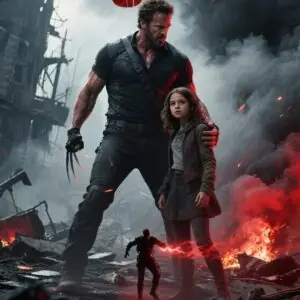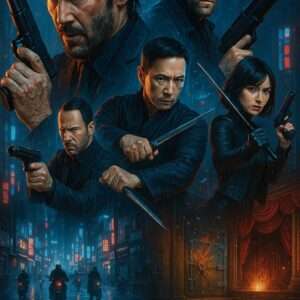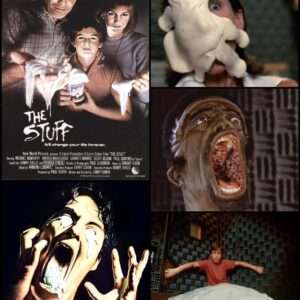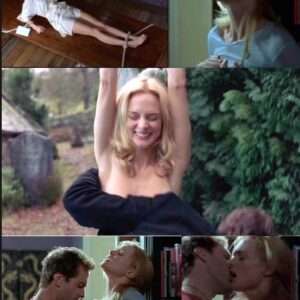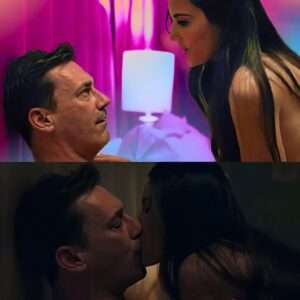Exploring Dredd (2012): A Gritty, Underrated Sci-Fi Gem
In the vast landscape of science fiction cinema, few films have managed to achieve the cult status of Dredd (2012), a visually arresting and viscerally intense reboot of the Judge Dredd franchise. Directed by Pete Travis and written by Alex Garland (who later gained acclaim for Ex Machina and Annihilation), Dredd strips down the concept of justice in a dystopian future to its brutal essence. While the movie did not initially succeed at the box office, it has since gained a devoted following, praised for its faithfulness to the source material, uncompromising tone, and stylish execution.
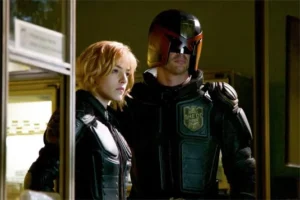
Setting the Scene: A Bleak Future
Dredd is set in a post-apocalyptic future where most of the Earth has become a radioactive wasteland. Humanity clings to survival in massive urban sprawls known as Mega-Cities. The story unfolds in Mega-City One, a vast, crime-infested metropolis stretching from Boston to Washington, D.C. With over 800 million citizens and an overwhelmed justice system, society relies on the Judges — elite law enforcers who serve as judge, jury, and executioner.
Among these judges is the stoic and legendary Judge Dredd, played with grim resolve by Karl Urban. Unlike the previous 1995 adaptation starring Sylvester Stallone, Urban’s Dredd never removes his helmet, staying true to the original 2000 AD comic book character created by John Wagner and Carlos Ezquerra. This choice was not only a nod to fans but a reinforcement of Dredd’s identity as a symbol of the law rather than a man.
Plot Summary
The plot of Dredd is refreshingly simple, yet highly effective. Dredd is tasked with evaluating a rookie, Judge Cassandra Anderson (played by Olivia Thirlby), whose psychic abilities, a result of genetic mutation from the radiation, set her apart from other Judges. Their assignment takes them to Peach Trees, a 200-story vertical slum controlled by a ruthless drug lord known as Ma-Ma (Lena Headey).
Ma-Ma is the sole distributor of a powerful narcotic called Slo-Mo, which makes time appear to pass at 1% of its normal speed. When Dredd and Anderson capture one of Ma-Ma’s top henchmen, the gang leader locks down the entire building and declares war on the Judges. What follows is a relentless, floor-by-floor battle for survival, echoing the structure of classic action films like Die Hard and The Raid: Redemption.
Visual Style and Direction
One of the most striking aspects of Dredd is its visual style. The cinematography by Anthony Dod Mantle is stark and gritty, capturing the oppressive atmosphere of Mega-City One. The use of Slo-Mo sequences, enhanced by high frame rate photography, adds a surreal and almost hypnotic beauty to the film’s violence. These moments, drenched in saturated colors and glittering slow-motion effects, contrast sharply with the harsh, grimy realism of the rest of the movie, creating a unique aesthetic balance.
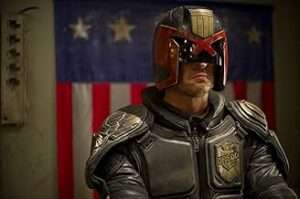
Director Pete Travis and writer Alex Garland (who many believe was heavily involved in the film’s direction) opted for a grounded, almost minimalist approach. Rather than exploring the broader world of Judge Dredd, they focused the story in a single location. This decision kept the budget manageable while maximizing narrative tension. The tight, claustrophobic setting adds to the film’s intensity, as Dredd and Anderson are trapped in enemy territory with limited resources and no backup.
Performances
Karl Urban’s portrayal of Judge Dredd is one of restrained intensity. He conveys authority and menace with minimal dialogue, relying on body language, tone, and his signature scowl. His unwavering sense of justice makes him both intimidating and admirable, while subtle hints of internal struggle peek through the cracks in his otherwise impenetrable façade.
Olivia Thirlby brings emotional depth to Judge Anderson. As a rookie, she experiences fear and doubt, but gradually proves her capability, compassion, and resolve. Her psychic abilities allow for some compelling character moments, particularly in a mental battle with one of Ma-Ma’s thugs. Anderson serves as a moral counterbalance to Dredd’s ruthlessness, and their dynamic is one of the film’s strengths.
Lena Headey, best known for her role as Cersei Lannister in Game of Thrones, delivers a chilling performance as Ma-Ma. Her portrayal of the drug lord is subdued but terrifying. With a scarred face and a dead-eyed stare, she exudes quiet menace, ruling Peach Trees with cruelty and control.
Themes and Subtext
Dredd explores themes of justice, authority, and moral ambiguity. In a world where the law is absolute, Dredd represents its harshest interpretation. Yet, through Anderson’s perspective, viewers are invited to question the cost of such black-and-white enforcement. The film doesn’t glorify violence or authoritarianism, but rather presents them as a grim reality of a broken society.
The film also touches on the dehumanizing effects of power and survival in a dystopia. Peach Trees itself becomes a microcosm of Mega-City One — lawless, desperate, and ruled by fear. By cleansing it floor by floor, Dredd becomes a symbol of relentless justice, but also of the futility of trying to impose order on chaos without addressing the underlying causes.
Critical Reception and Cult Status
Upon its release, Dredd received positive reviews from critics, holding a solid score on Rotten Tomatoes. It was praised for its faithful adaptation, stylish visuals, and tight storytelling. However, the film underperformed at the box office, grossing only around $41 million against a $45 million budget. Poor marketing, audience confusion with the 1995 version, and limited release formats may have contributed to its lackluster commercial performance.
Despite this, Dredd found new life through home video and streaming platforms. Fans rallied for a sequel, launching petitions and social media campaigns. Although a direct sequel has not materialized, discussions about a potential continuation — possibly as a television series titled Mega-City One — have kept hope alive.
Conclusion
Dredd (2012) stands as a testament to the power of tight storytelling, striking visuals, and uncompromising tone in science fiction filmmaking. While it may not have received the recognition it deserved at the time of its release, it remains a beloved cult classic among fans of the genre. With its bleak world, brutal action, and nuanced characters, Dredd is a bold cinematic experience that continues to resonate with audiences who crave something raw, unfiltered, and fiercely original.
